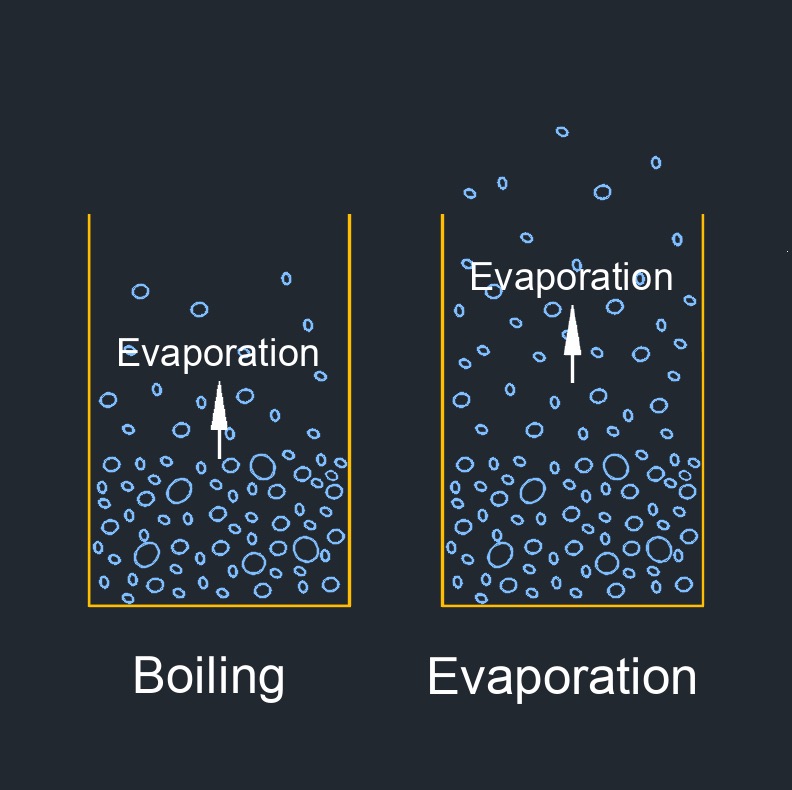Heat of Vaporization
Heat of Vaporization Formula |
||
|
\( \Delta H_v \;=\; \Delta U_v + p \cdot \Delta V \) (Heat of Vaporization) \( \Delta U_v \;=\; \Delta H_v - p \cdot \Delta V \) \( p \;=\; \dfrac{ \Delta H_v - \Delta U_v }{ \Delta V } \) \( \Delta V \;=\; \dfrac{ \Delta H_v - \Delta U_v }{ p } \) |
||
| Symbol | English | Metric |
| \( \Delta H_v \) = Heat of Vaporization | \(Btu\;/\;lbm\) | \(J\;/\;kg\) |
| \( \Delta U_v \) = Change in Internal Energy of the Vapor | \(Btu\) | \(J\) |
| \( p \) = Pressure | \(lbf \;/\; in^2\) | \(Pa\) |
| \( \Delta V \) = Change in Volume | \(in^3\) | \(mm^3\) |
 Heat of vaporization, abbreviated as \(H_v\), also called enthalpy of vaporization, is the amount of heat energy required to transform a given quantity of a substance from its liquid state to its gaseous state at a constant temperature and pressure. When a substance undergoes vaporization, it absorbs heat energy to break the intermolecular forces holding the molecules together in the liquid phase and convert them into the gaseous phase, where the molecules are more spaced out and have higher kinetic energy. The heat of vaporization is a measure of the strength of these intermolecular forces.
Heat of vaporization, abbreviated as \(H_v\), also called enthalpy of vaporization, is the amount of heat energy required to transform a given quantity of a substance from its liquid state to its gaseous state at a constant temperature and pressure. When a substance undergoes vaporization, it absorbs heat energy to break the intermolecular forces holding the molecules together in the liquid phase and convert them into the gaseous phase, where the molecules are more spaced out and have higher kinetic energy. The heat of vaporization is a measure of the strength of these intermolecular forces.
The heat of vaporization is a crucial property in thermodynamics and is used in various scientific and engineering applications. It plays a significant role in understanding phase changes, such as boiling, and is essential in fields like chemistry, physics, and engineering when designing processes involving the vaporization or condensation of substances, such as in the operation of steam engines, refrigeration systems, or chemical reactions. Different substances have different values for their heat of vaporization, depending on their molecular structure and the strength of their intermolecular forces.

